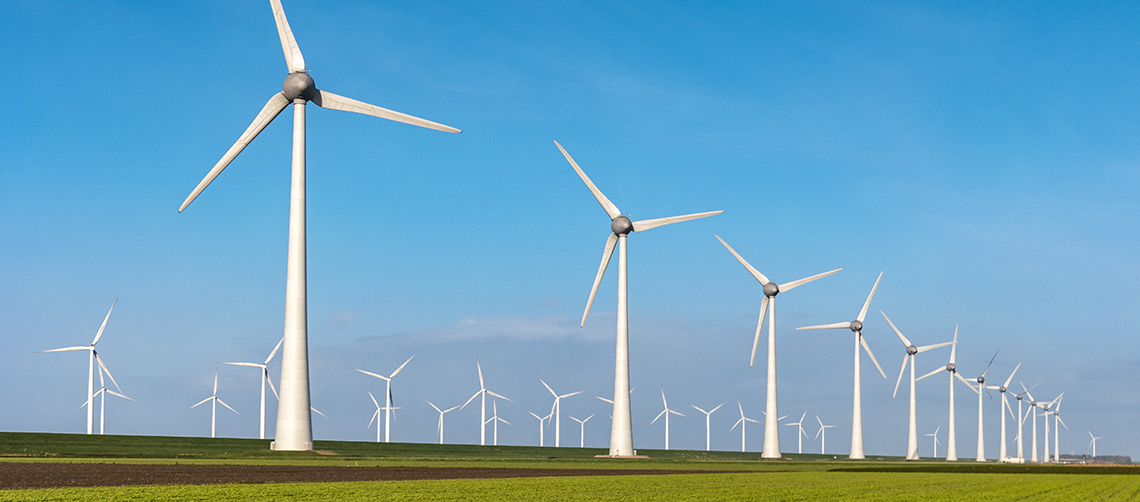While the green energy story appears promising, serious concerns are raised over the capacity of evacuation infrastructure to accommodate large capacities.
The country is witnessing a continuous trend of plummeting energy costs due to consistent decrease in the generation prices of renewable energy. Prices of renewables over the last few years have seen all-time lows, such as Rs 2.44 per unit of solar power and Rs 2.43 per unit of wind power in tariff-based competitive bidding. This clearly underlines that we are heading towards an era of low cost energy with low carbon footprint. With diminished prices, renewable energy is now competitive and is expected to tread a self-perpetuating growth path. However, while the green energy story appears promising, serious concerns are raised over the capacity of evacuation infrastructure to accommodate large capacities, given the slow transmission planning process in the country and grid stability requirements which are corollary to any large-scale renewable addition
Green story is so far so good
India is steadily moving towards meeting the ambitious target of 175 GW of installed renewable energy capacity by 2022 or even earlier. Total contribution from solar is 100 GW, out of which 40 GW is expected from roof top and the rest from grid-connected solar. About 60 GW is projected from wind, 10 GW through biomass-based generation and 5 GW by small hydro. By December 2017, a total of about 62 GW renewable power was installed, of which 16 GW was from grid-connected solar and 33 GW was from wind. Annual capacity addition of 12û15 GW of solar and 10 GW of wind is required for meeting the targets.
The nation’s resolve to achieving a green energy mix is also reflected in the recently published National Electricity Plan (NEP) by the Central Electricity Authority (CEA), which indicates that only 6,445 MW of additional capacity would be required from coal-based sources between FY17 and 22. This means most of the future energy needs are going to be catered through renewable sources. India has committed that by 2030 at least 40 per cent of its energy needs will be met by renewable sources, which currently stands at 19 per cent in terms of installed capacity. The continuous evolution of technology on renewables would continue bringing down per unit costs of energy generation, besides keeping the renewable story exciting and compelling for all stakeholders from the generators to consumers. People who claim that solar prices are unsustainable would be proven wrong in the next four or five years. For being environmentally unfriendly and non-competitive on per unit costs, other sources of energy would almost find it difficult to survive.
Lack of transmission infrastructure
For this story to sustain, it is not the cost of generation, but the availability of timely, robust and efficient transmission systems, which is a constraint. A cost-effective transmission system is required to ensure that the gains made out of low cost green power are delivered to the consumer. In the last few years, while renewable energy generation has exploded with a CAGR of about 22 per cent and continues to grow at the same or even greater vigour, the transmission infrastructure has not been able to keep pace and has rather lagged significantly behind. While the investment grew well in the early part of the current decade, topping to about Rs 520 billion in 2014û15 in interstate transmission, the creation of new transmission schemes have since slowed down considerably year-after-year. This year has only seen Rs 16.9 billion of new transmission schemes from the empowered committee.
Unlike thermal or hydro generation, the renewables have a low gestation period and can be put to commercial operation in as fast as 6û12 months. India has a history of constructing high voltage transmission lines in a duration of 24û60 months. This means the country has to either improve the construction schedule to match with the commissioning of renewable assets or correct the transmission planning approach to ensure readiness of the evacuation infrastructure before generation begins. Currently, planning for transmission is done more as a reaction which gets triggered when the generators request for the evacuation infrastructure. Transmission planning needs to be proactive and enable plug and play connectivity in the power value chain, thus de-risking larger investments in power generation. The country also needs to work on reducing the commissioning cycle to 12 months for renewable-linked transmission assets.
Concerns on lack of sufficient transmission infrastructure was also raised recently by Adnan Amin, Head, International Renewable Energy Agency (IRENA). He said that the main constraint in India is not investment for renewables, but the strengthening of grids. This is because to take a large share of renewables into the grid effectively, India needs a robust transmission infrastructure.
A robust power transmission system can be best built through competitive bidding. Logic should be built in defining the cost of inefficiencies in the cost plus model of infrastructure development, since it can otherwise lead to a higher cost of delivered power. This is particularly important since the cost of transmitting per unit of renewable energy is inherently higher due to low PLFs of renewable generation. Historically, it has been proven that the tariff for transmission infrastructure developed under the tariff-based competitive model is less by about 30 per cent compared to that of cost plus model.
India is steadily moving towards meeting the ambitious target of 175 GW of installed renewable energy capacity by 2022.
Author:
Anil Rawal, Vice President, Sterlite Power
This article has appeared in http://www.powertoday.in/
To view the article, visit: http://bit.ly/2ID9iw7
Disclaimer: The views and opinions expressed in this article are those of the author(s/) and do not necessarily reflect the official policy or position of Sterlite Power.

 Please wait...
Please wait...